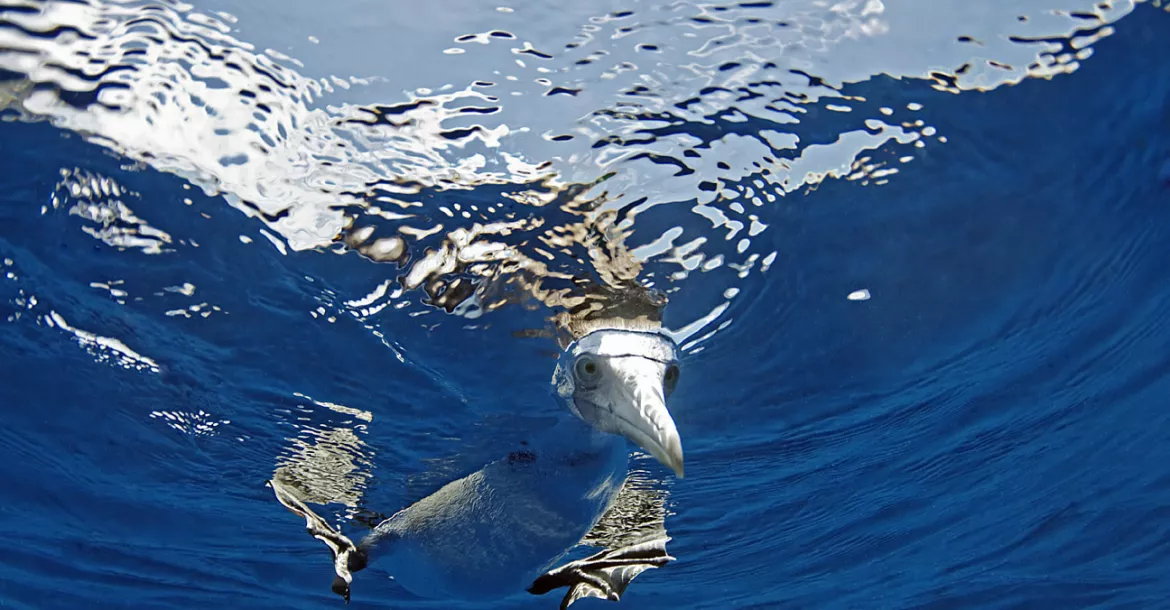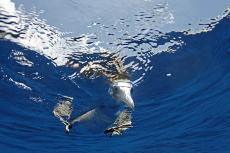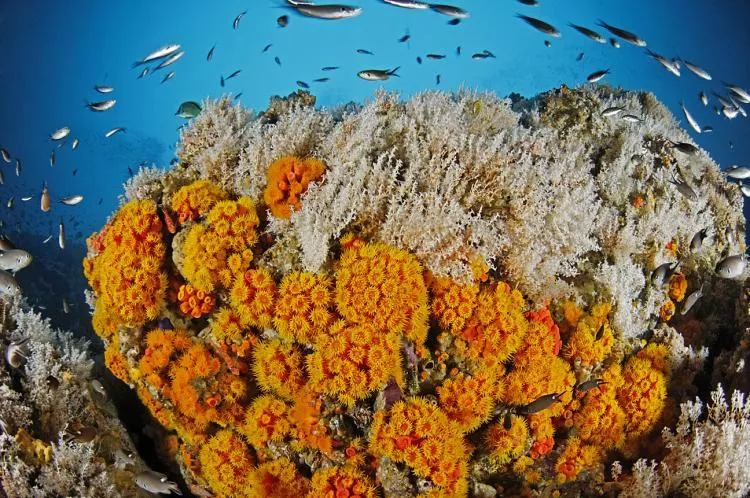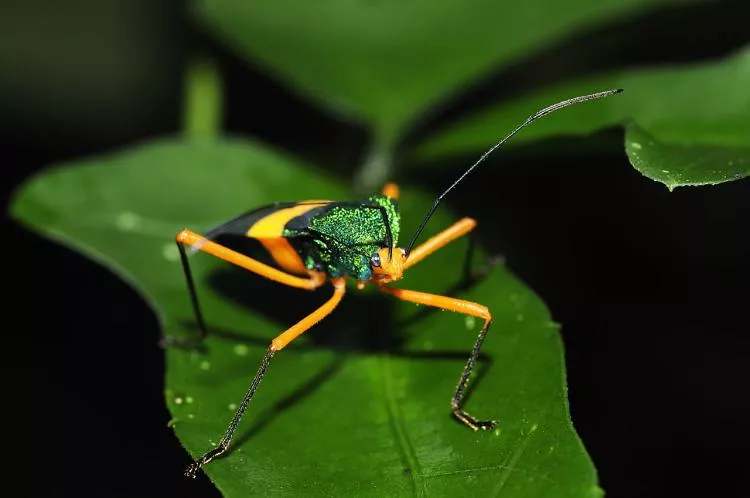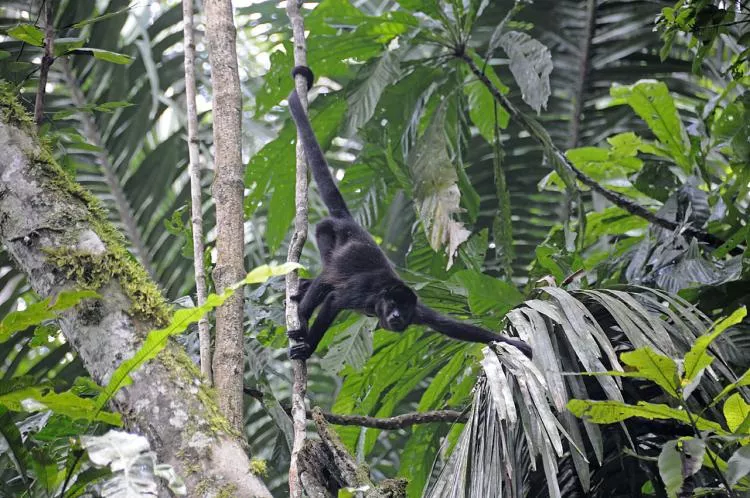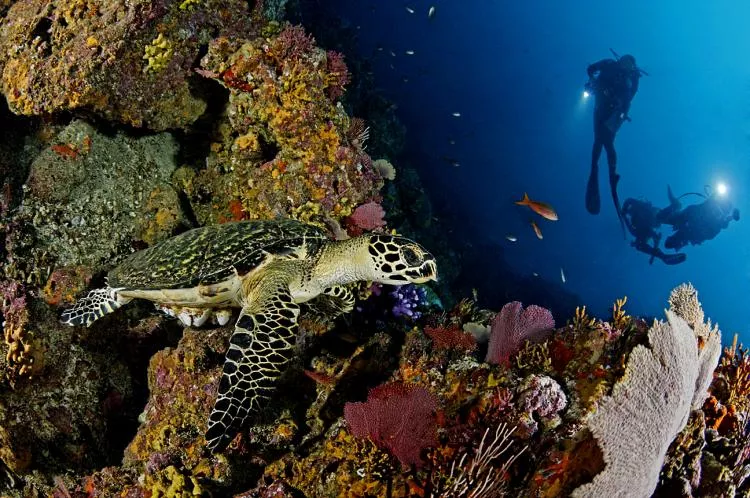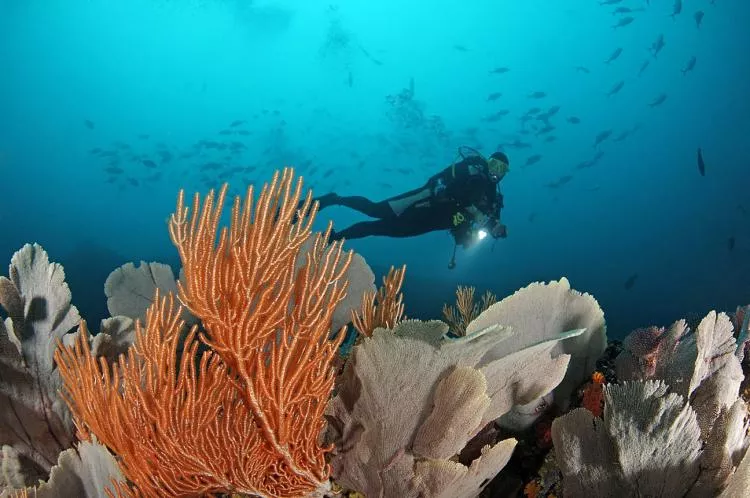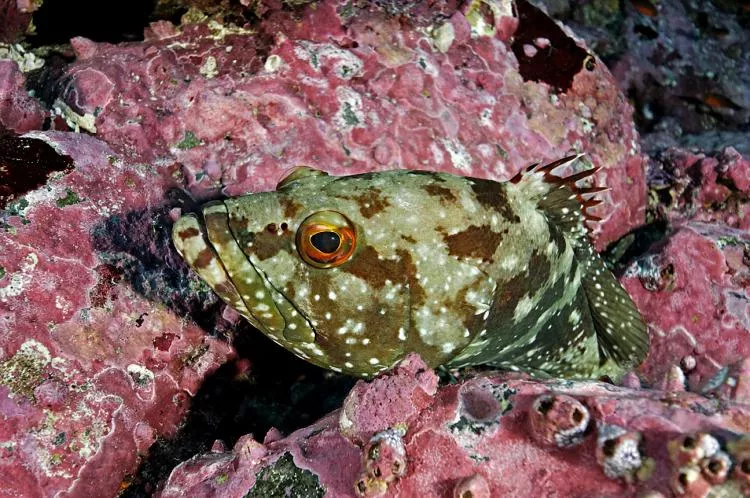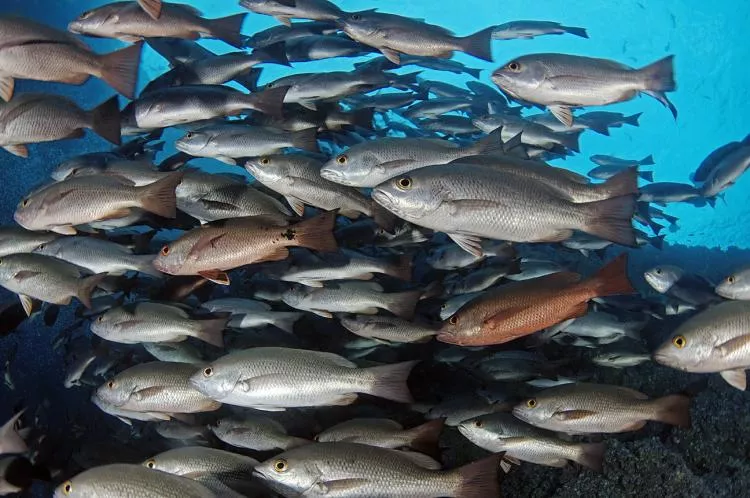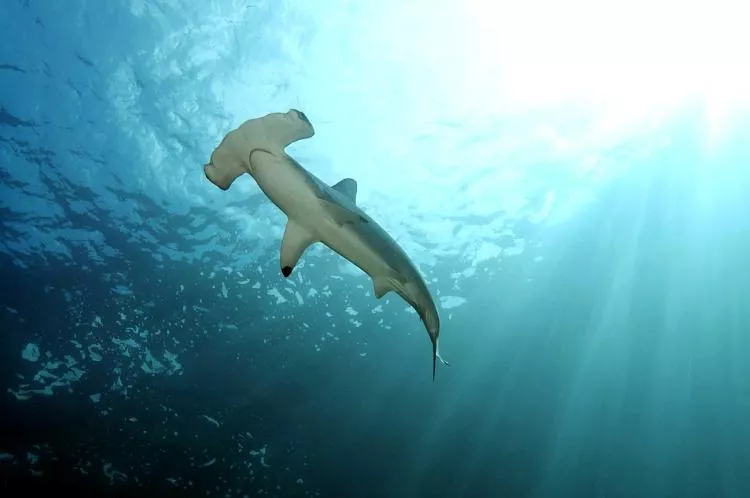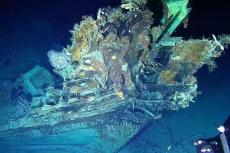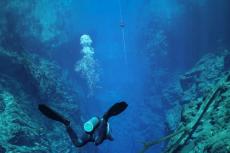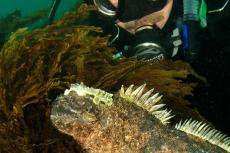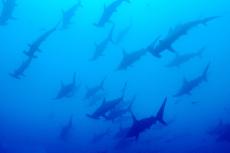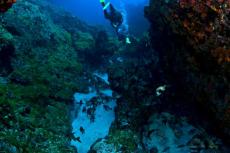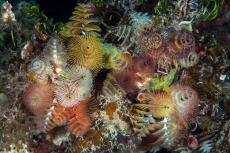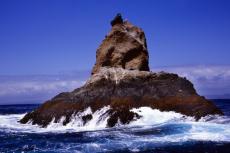Three of world’s best shark spots are located far off the coast of Central and South American, in the eastern Pacific Ocean. The least known of them, the tiny Colombian island of Malpelo, together with Galapagos and Cocos, create a “golden triangle” for big fish fans.
Contributed by
Swarms of doctor-, handle- and butterflyfish could be on anything of it and seemed to dance around us effortlessly. Moray eels, with bodies as thick as a person’s arms, were not peering out of their residential holes with only their heads as one usually finds them, but meandered out in the open virtually defenseless between the sparsely colonized rocks. Mostly flat, sharp barnacles were growing on the outcroppings; beautiful pink-colored coralline algae covered the jagged volcanic rock.
A dark gap yawned before us. Not quite three meters wide, but certainly more than ten feet tall, we were lured into the pitch black rock. Startled by our headlights, a handsome whitetip reef shark peered at us in the distance. Shortly after, we were blocked by a wall of Blaustreifenschnappern in the way. They seemed reluctant to give us room to pass.
Behind the school of fish, a deep blue shadow loomed. The slot-shaped cavity turned out to be about a 20-meter-long tunnel. Shortly before starting their impressive romp, Dickkopf mackerel made their sickle-shaped fins; they were incredibly quick and agile. During the slow ascent to the surface, we were honored by a squad of eagle rays. The graceful animals soared in formation far below us on the barren rocky reef.
After leaving the reef behind, it seemed a long time after we shot our surface marker buoy to notify the dive boat to come to us that they finally noticed us. There was extremely great danger in being abandoned, unnoticed out here. Being a good 500 kilometers from the Colombian coast and far away from any shipping routes was really uncomfortable. After a few minutes, neither substrate nor reef could be seen.
An invisible current came at us through the eastern Pacific. At a depth of around five meters, the sea suddenly turned dark ahead of us. Had the current taken us back to the rocks? No, it was a gigantic wall of jacks coming towards us -- the biggest school I have ever seen.
Thousands of silvery fish bodies orbited around us, enveloped us, obstructing the view between buddies. We enjoyed the feeling of being part of the swarm for a few minutes. But just as suddenly as it started, the swarm was gone. Visability cleared as the mackerel left us to move with the current.
The otherwise empty desert-like blue sea, however, had another surprise in store for us. About two dozen tuna plowed past us. Their interest in us seemed extremely low. After a few seconds, we had the open ocean back to ourselves. But not for long.
First, only a shadow could be seen on the edge of our vision. I had a little more than a hunch, a hope. Yes, it was a shark. One, no two, no, a whole group! And then the numbers increased very quickly. Out of nowhere, the sharks suddenly appeared everywhere.
During the entire dive, we had hoped, feared that this would happen. Now, it had come true. We were surrounded by a vast amount of about two-meter-long silky sharks! The lean, slightly golden, shimmering predators circled us, swam among us, enveloped us.
Their numbers were difficult to estimate; it was impossible to count them. Who knew how many were still out of sight? With over a hundred schools—some say even up to a thousand—these clusters of silky sharks are found only here at Malpelo and are unique in the world.
The animals seemed curious but not aggressive. Most did not come closer than five meters; some were brave and came within about two meters.
When others approached, they differed simply in their depth. Unfortunately, our air supply dwindled, as did the sharks, and all the schools of fish slowly lost their interest in us. We began our ascent. (...)
Published in
- Log in to post comments

